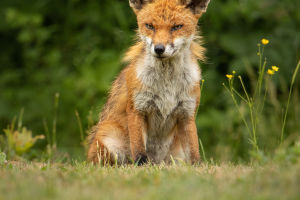Orcas, also known as killer whales, are one of the most iconic and recognizable marine mammals in the world.
They are found in all of the world's oceans and are known for their highly social behavior, intelligence, and unique hunting strategies.
Orcas are apex predators, meaning they are at the top of the food chain and have no natural predators themselves.
They are highly adaptable and have been known to eat a wide variety of prey, from fish and squid to seals and even other whales.
One of the most striking things about orcas is their appearance. They are easily recognized by their distinct black and white markings, with a tall dorsal fin and sleek, torpedo-shaped body.
Adult males can reach lengths of up to 32 feet and can weigh as much as 12,000 pounds, while females are slightly smaller, reaching lengths of up to 28 feet and weighing up to 8,000 pounds.
Orcas are highly social animals and are known to live in complex family groups known as pods. These pods can consist of up to 40 individuals and are typically led by a dominant female, known as the matriarch.
Within the pod, individual orcas exhibit highly complex and sophisticated communication, using a variety of vocalizations to communicate with each other and coordinate their hunting strategies.
One of the most fascinating aspects of orcas is their hunting behavior. Orcas are known for their ability to work together to take down large prey, such as sea lions and even other whales.
They use a variety of techniques to do this, including creating waves to knock prey off of ice floes, swimming in synchronized patterns to create confusion and disorienting prey, and even intentionally beaching themselves to catch seals.
Despite their status as apex predators, orcas face several threats in the wild.
One of the biggest threats to orcas is habitat loss and degradation, as human activity such as pollution and overfishing can have a profound impact on the health of marine ecosystems.
In addition, orcas are often hunted for their meat and other body parts, particularly in parts of Asia.
Scientists continue to study these fascinating animals to better understand their biology, ecology, and behavior.
By understanding more about orcas, we can work to better protect them and ensure that they continue to thrive in the wild.
In conclusion, orcas are truly remarkable animals that have captured the imaginations of people all over the world.
With their distinct markings, complex social behavior, and unique hunting strategies, they are a true icon of the ocean.
While they face several threats in the wild, there is still much to be learned about these fascinating creatures, and continued research and conservation efforts are essential to their survival.


